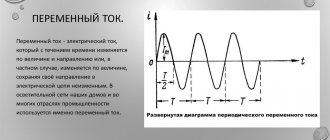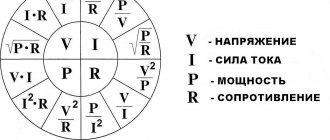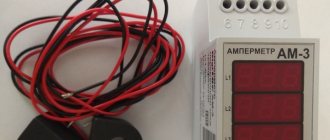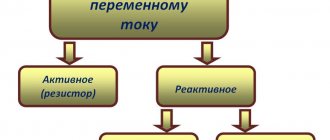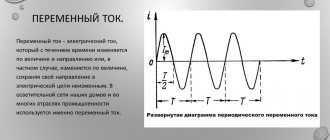The most typical are two connection schemes: between two phases of the electrical network, between one phase and the ground. In addition, it is possible to touch grounded non-current-carrying parts that are energized, as well as to turn on a person under step voltage.
The connection point between the windings of the supply transformer (generator) is called the neutral point, or neutral. The neutral of the power source can be isolated and grounded.
Grounded is the neutral of a generator (transformer), connected to a grounding device directly or through low resistance (for example, through current transformers).
Isolated is the neutral of a generator or transformer that is not connected to a grounding device or is connected to it through a high resistance (signaling, measuring, protection devices, grounding arc suppression reactors).
Expert opinion
It-Technology, Electrical power and electronics specialist
Ask questions to the “Specialist for modernization of energy generation systems”
Electric shock. What is an electrical injury? Help in case of electric shock, consequences and protection against electric shock. The main causes of death in electrical trauma are cardiac arrest and respiratory arrest as a result of damage to the respiratory center. Ask, I'm in touch!
What is the basis for choosing the neutral mode?
The choice of the network diagram, and therefore the neutral mode of the current source, is made based on technological requirements and safety conditions.
At voltages up to 1000 V, both three-phase network schemes are widely used: three-wire with an insulated neutral and four-wire with a grounded neutral.
The existing opinion about a higher degree of reliability of networks with an isolated neutral is not sufficiently substantiated.
Statistical data indicate that in terms of operational reliability, both networks are almost identical.
At voltages above 1000 V up to 35 kV, the networks, for technological reasons, have an insulated neutral, and above 35 kV, a grounded neutral.
Since such networks have a large wire capacitance relative to the ground, it is equally dangerous for a person to touch a network wire with either an insulated or a grounded neutral. Therefore, the network neutral mode above 1000 V is not selected for safety reasons.
The danger of electric shock to people at work and at home arises when safety measures are not followed, as well as when electrical equipment and household appliances fail or malfunction. Compared to other types of industrial injuries, electrical injuries make up a small percentage, but the number of injuries is severe and especially fatal. .
The effect of electric current on living tissue is diverse and unique. Passing through the human body, electric current produces thermal, electrolytic, mechanical, biological, and light effects.
Thermal effect of current
characterized by heating the skin and tissues to high temperatures, resulting in burns.
Electrolytic effects
consists in the decomposition of organic liquid, including blood, and disruption of its physicochemical composition.
Mechanical action
current leads to stratification, rupture of body tissues as a result of the electrodynamic effect, as well as instantaneous explosive formation of steam from tissue fluid and blood. Mechanical action is associated with strong contraction of muscles until they rupture.
Biological action
manifests itself in irritation and excitation of living tissues and is accompanied by convulsive muscle contractions.
Light action
leads to damage to the mucous membranes of the eyes. When dealing with physics (describing the behavior of moving charges) and physiology (describing the reaction of a living body to a moving charge), one cannot operate with “logic”, which involves not specific values of physical quantities, but “very many”, “very few” and so on.
What kind of lighting do you prefer?
Built-in Chandelier
Let's start with what actually kills in the event of electric shock. For death from electric current to occur, certain conditions must be met (at least one): cardiac arrest (caused by muscle contraction under the influence of current flowing through it), irreversible damage to the nervous system, deep tissue burns.
These same factors in different combinations affect damage to the nervous system and burns. In stories of lightning damage, the question always remains: did the current flow through the body, or along its surface, or generally only “tangentially” (wet, not very clean clothes have less resistance, and the mechanism for the flow of currents of such high voltage deserves a separate article) .
Ohm's law for a circuit section states: current is directly proportional to voltage and inversely proportional to resistance.
In a popular form, this law can be formulated as follows: the higher the voltage at the same resistance, the higher the current, and at the same time, the higher the resistance at the same voltage, the lower the current.
To express Ohm's law mathematically in the simplest way, we consider that the resistance of a conductor in which a current of 1 A passes at a voltage of 1 V is equal to 1 Ohm.
The current in amperes can always be determined by dividing the voltage in volts by the resistance in ohms. Therefore, Ohm's law for a section of the circuit
is written by the following formula:
Analysis of the danger of electric shock in various electrical networks
Since the neutral resistance Ro is usually many times less than the resistance of the human body, it can be neglected. Then
Expert opinion
It-Technology, Electrical power and electronics specialist
Ask questions to the “Specialist for modernization of energy generation systems”
For teachers - Rosseti Ural From the above data it is clear that insulating floors and non-conductive shoes are of great importance for the safety of those working in electrical installations. Ask, I'm in touch!
What is power and current density?
Well, we found out what constant current is and what alternating current is. But you probably still have a lot of questions. We will try to consider them in this section of our article.
From this video you can learn more about what power is.
- And the first of these questions will be: what is electric voltage? Voltage is the potential difference between two points.
What is electrical voltage
- The question immediately arises, what is potential? Now professionals will criticize me again, but let’s say this: this is an excess of charged particles. That is, there is one point at which there is an excess of charged particles - and there is a second point where there are either more or fewer of these charged particles. This difference is called voltage. It is measured in volts (V).
Socket voltage
- Let's take a regular outlet as an example. You all probably know that its voltage is 220V. We have two wires in the socket, and a voltage of 220V means that the potential of one wire is greater than the potential of the second wire by exactly these 220V.
- We need to understand the concept of voltage in order to understand what electric current power is. Although from a professional point of view, this statement is not entirely correct. Electric current does not have power, but is its derivative.
Electric current density in a conductor
- To understand this point, let's go back to our water pipe analogy. As you remember, the cross-section of this pipe is the voltage, and the flow rate in the pipe is the current. So: power is the amount of water that flows through this pipe.
- It is logical to assume that with equal cross sections, that is, voltages, the stronger the flow, that is, the electric current, the greater the flow of water moves through the pipe. Accordingly, the more power will be transferred to the consumer.
- But if, in the analogy with water, we can transmit a strictly defined amount of water through a pipe of a certain cross-section, since water is not compressed, then with electric current everything is different. We can theoretically transmit any current through any conductor. But practically, a conductor with a small cross-section at a high current density will simply burn out.
Current Density Formula
- In this regard, we need to understand what current density is. Roughly speaking, this is the number of electrons that moves through a certain cross-section of a conductor per unit time.
- This number should be optimal. After all, if we take a conductor of large cross-section and transmit a small current through it, then the price of such an electrical installation will be high. At the same time, if we take a conductor of small cross-section, then due to the high current density it will overheat and quickly burn out.
- In this regard, the PUE has a corresponding section that allows you to select conductors based on the economic current density.
Conductor selection table based on economic current density
- But let's return to the concept of what is current power? As we understood from our analogy, with the same cross-section of the pipe, the transmitted power depends only on the current strength. But if the cross-section of our pipe is increased, that is, the voltage is increased, in this case, at the same flow rates, completely different volumes of water will be transmitted. It's the same in electrics.
Transfer of power through lines of different voltages and types of electric current
- The higher the voltage, the less current is needed to transmit the same power. That is why high-voltage power lines are used to transmit large amounts of power over long distances.
After all, a line with a wire cross-section of 120 mm2 for a voltage of 330 kV is capable of transmitting many times more power in comparison with a line of the same cross-section, but with a voltage of 35 kV. Although what is called the current strength will be the same in them.
Fatal injury from low voltage direct electric current
- Call an ambulance
- Assess the situation and, if possible, free the victim from the effects of electric current
- Provide first aid until the ambulance arrives
Rules for dealing with electricity at home
The rules for handling electrical appliances are not complicated and are easy to remember:
DO NOT use electrical appliances without adult permission.
YOU MUST NOT replace light bulbs and fuses, repair electrical wiring and household appliances, open the back covers of televisions and radios, install bells, switches and plug sockets. Let an adult or an electrician do this!
DO NOT use faulty electrical appliances. If there is a smell of burnt rubber coming from your TV, refrigerator or vacuum cleaner, or if sparks are visible, you should immediately unplug the device and tell an adult about the faulty device.
DO NOT repair or disassemble electrical appliances yourself.
When turning off an electrical appliance, DO NOT pull the cord. You need to grasp the plug and smoothly remove it from the socket.
DO NOT play with electrical outlets. If you see a faulty socket, switch, exposed wire, DO NOT touch anything and immediately tell an adult about it!
REMEMBER , electricity does not tolerate proximity to water. To avoid getting an electric shock, DO NOT touch switched-on electrical appliances with wet hands or wipe electrical appliances with a damp cloth.
Electrical hazard or consequences of electric shock
- Tinnitus, hearing loss, tactile disorder. Possible ruptures of the eardrums, injuries to the middle ear with subsequent deafness (if exposed to high voltage current). When exposed to bright light, damage to the visual apparatus may occur in the form of keratitis, choroiditis, and cataracts.
- The passage of current through muscle fibers leads to their spasm, which can manifest itself as cramps. Significant contraction of skeletal muscles by electric current can lead to fractures of the spine and long bones.
- Spasm of the muscular layer of blood vessels can lead to increased blood pressure or the development of myocardial infarction due to spasm of the coronary vessels of the heart.
- The main causes of death in electrical accidents are cardiac arrest and respiratory arrest as a result of damage to the respiratory center.
- The effect of electric current can cause long-term complications. Such complications include: damage to the central and peripheral nervous system (inflammation of the nerves - neuritis, trophic ulcers, encephalopathy), the cardiovascular system (disturbances in heart rhythm and conduction of nerve impulses, pathological changes in the heart muscle), the appearance of cataracts, hearing impairment, etc.
- Electrical burns can heal with the development of deformities and contractures of the musculoskeletal system.
- Repeated exposure to electric current can lead to early arteriosclerosis, obliterating endarteritis and persistent autonomic changes.
| Classification according to Frenkel | |
| Degree | Characteristic |
| 1st | Partial convulsions; |
| 2nd | A general convulsion, after turning off the current, does not cause a state of prostration; |
| 3rd | The victim is in severe prostration, with temporary inability to move, with or without loss of consciousness. |
| 4th | Death, immediate or with previous prostration. |
Expert opinion
It-Technology, Electrical power and electronics specialist
Ask questions to the “Specialist for modernization of energy generation systems”
Which network is safer - with an isolated or grounded neutral? In stories of lightning damage, the question always remains: did the current flow through the body, or along its surface, or even just tangentially? Wet, not very clean clothes have less resistance, and the mechanism for the flow of currents of such high voltage deserves a separate article. Ask, I'm in touch!
Electrical hazard or consequences of electric shock
- Thermal effects : electrical energy, meeting resistance with body tissues, turns into thermal energy and causes electrical burns. Mostly, burns occur at the point of entry and exit of current, that is, in places of greatest resistance. As a result, so-called marks or current signs are formed. Thermal energy, converted from electrical energy, destroys and changes tissue along its path.
- Electrochemical effects: “gluing”, thickening of blood cells (platelets and leukocytes), movement of ions, change in protein charges, formation of steam and gas, giving tissues a cellular appearance, etc.
- Biological effects: disruption of the nervous system, disruption of cardiac conduction, contraction of the skeletal muscles of the heart, etc.
Electric shock sign or electrotag
| Electromark – areas of tissue necrosis at the points of entry and exit of electric current. They arise due to the transition of electrical energy into thermal energy. | |||
| Form | Color | Characteristic signs | Photo |
| Round or oval, but can also be linear. Often there is a ridge-like elevation along the edges of the damaged skin, while the middle of the mark appears slightly sunken. Sometimes the top layer of skin may peel away in the form of blisters, but without fluid inside, unlike thermal burns. | Usually lighter than surrounding tissue - pale yellow or grayish white. | The marks are completely painless due to damage to the nerve endings. Deposition of conductor metal particles on the skin (copper - blue-green, iron-brown, etc.). When exposed to a low voltage current, metal particles are located on the surface of the skin, and when exposed to a high voltage current, they spread deep into the skin. The hair in the area of the marks is twisted into a spiral, maintaining its structure. | |
| Electrical burns are not always limited to marks on the skin. Quite often, damage to deeper tissues occurs: muscles, tendons, bones. Sometimes the lesions are located under apparently healthy skin. | |||
Should I call an ambulance?
There are cases of sudden death a few hours after electric shock. Based on this, any victim of an electric shock must be taken to a specialized hospital, where, if necessary, emergency assistance can be provided.
Steps to help with electric shock
- Stop the impact of current on the victim , following the established rules. Open the electrical circuit using a circuit breaker or switch, or unplug the plug from the outlet. Remove the current source from the victim using insulating objects (wooden stick, chair, clothing, rope, rubber gloves, dry towel, etc.). You should approach the victim wearing rubber or leather shoes on a dry surface or placing a rubber mat or dry boards under your feet.
- Determine the presence of consciousness
Methods of transmitting electric current
We figured out what current and voltage are. It's time to figure out how to distribute electric current. This will allow you to feel more confident in dealing with electrical appliances in the future.
D.C
As we have already said, current can be alternating and constant. In industry, and in your sockets, alternating current is used. It is more common because it is easier to transmit over wires. The fact is that changing DC voltage is quite difficult and expensive, but changing AC voltage can be done using ordinary transformers.
Note! No AC transformer will operate on DC current. Since the properties that it uses are inherent only to alternating current.
Accumulator battery
- But this does not mean at all that direct current is not used anywhere. It has another useful property that is not inherent in a variable. It can be accumulated and stored.
- In this regard, direct current is used in all portable electrical appliances, in railway transport, as well as in some industrial facilities where it is necessary to maintain functionality even after a complete loss of power supply.
Industrial battery
- The most common method of storing electrical energy is batteries. They have special chemical properties that allow them to accumulate and then, if necessary, release direct current.
- Each battery has a strictly limited amount of accumulated energy. This is called the battery capacity, and is partly determined by the battery's inrush current.
- What is battery starting current? This is the amount of energy that the battery is capable of delivering at the very initial moment the load is connected. The fact is that, depending on their physical and chemical properties, batteries differ in the way they release the accumulated energy.
Battery discharge graphs
- Some people can give a lot at once. Because of this, they, of course, will quickly discharge. And the latter give for a long time, but a little at a time. Additionally, an important aspect of a battery is its ability to maintain voltage.
- The fact is that, as the instructions say, for some batteries, as their capacity is released, their voltage gradually decreases. And other batteries are capable of delivering almost the entire capacity with the same voltage. Based on these basic properties, these storage facilities for electricity are chosen.
- To transmit direct current, two wires are used in all cases. This is a positive and negative vein. Red and blue.
Alternating current
But with alternating current everything is much more complicated. It can be transmitted over one, two, three or four wires. To explain this, we need to understand the question: what is three-phase current?
- Our alternating current is produced by a generator. Typically, almost all of them have a three-phase structure. This means that the generator has three terminals and an electric current is supplied to each of these terminals, differing from the previous ones by an angle of 120⁰.
Sinusoids of a three-phase alternating current network
- In order to understand this, let's remember our sinusoid, which is a model for describing alternating current, and according to the laws of which it changes. Let's take three phases - “A”, “B” and “C”, and take a certain point in time. At this point, the sine wave of phase “A” is at the zero point, the sine wave of phase “B” is at the extreme positive point, and the sine wave of phase “C” is at the extreme negative point.
- Each subsequent unit of time, the alternating current in these phases will change, but synchronously. That is, after a certain time, in phase “A” there will be a negative maximum. In phase “B” there will be a zero, and in phase “C” there will be a positive maximum. And after some time, they will change again.
Phase and linear voltages of a three-phase network
- As a result, it turns out that each of these phases has its own potential, different from the potential of the neighboring phase. Therefore, there must be something between them that does not conduct electric current.
- This potential difference between two phases is called line voltage. In addition, they have a potential difference relative to the ground - this voltage is called phase voltage.
- And so, if the linear voltage between these phases is 380V, then the phase voltage is 220V. It differs by a value of √3. This rule always applies for any voltage.
Values of phase and line voltages
- Based on this, if we need a voltage of 220V, then we can take one phase wire and a wire rigidly connected to the ground. And we will get a single-phase 220V network. If we need a 380V network, then we can take only any 2 phases and connect some kind of heating device as in the video.
Color designation of three-phase network conductors in different countries of the world
But in most cases, all three phases are used. All powerful consumers are connected to a three-phase network.
Which current is more dangerous: direct or alternating current?
When the basics are sorted out, you need to determine which current is more dangerous to life, direct or alternating. The answer to this question is simple - alternating current is more dangerous than direct current. And that's why:
- the same effect of both types of current can only occur when the DC power exceeds the AC power by 4 times;
- the cause of death is ventricular fibrillation, the risk of which is much higher when the body is exposed to alternating current;
- There is a rule: if the frequency is lower, then the resistance is higher, but for a variable, the minimum frequency value of which almost always reaches 50 Hz, the resistance is low.
Such an impact can be avoided not only by using safety precautions, but also by observing the rules for electrical installations.
Expert opinion
It-Technology, Electrical power and electronics specialist
Ask questions to the “Specialist for modernization of energy generation systems”
Degrees of electric shock If the victim is conscious, before the ambulance arrives, if necessary, you can give painkillers analgin, ibuprofen, etc. Ask, I’m in touch!
What is electric current
So, what is electric current? This is a directed flow of charged particles. But what are these particles, why are they suddenly moving, and where? This is all not very clear. Therefore, let's look at this issue in more detail.
Electric charge carriers in various materials
- Let's start with the question about charged particles, which, in fact, are carriers of electric current . They are different in different substances. For example, what is electric current in metals? These are electrons. In gases there are electrons and ions; in semiconductors - holes; and in electrolytes these are cations and anions.
Atomic structure
- These particles have a certain charge. It can be positive or negative. The definition of positive and negative charge is given conditionally. Particles with the same charge repel, and particles with opposite charges attract.
Electricity
- Based on this, it turns out to be logical that the movement will occur from the positive pole to the negative one. And the greater the number of charged particles present at one charged pole, the greater their number will move to the pole with a different sign.
- But this is all deep theory, so let's take a concrete example. Let's say we have an outlet to which no appliance is connected. Is there current there?
- To answer this question we need to know what voltage and current are. To make this clearer, let's look at this using the example of a pipe with water. To put it simply, the pipe is our wire. The cross-section of this pipe is the voltage of the electrical network, and the flow speed is our electric current.
- Let's return to our outlet. If we draw an analogy with a pipe, then a socket without electrical appliances connected to it is a pipe closed with a valve. That is, there is no electric current there.
Electric current will appear when there is a load, and for this you need to insert the plug into the socket
- But there is tension there. And if in a pipe, in order for a flow to appear, it is necessary to open the valve, then in order to create an electric current in the conductor, you need to connect a load. This can be done by plugging the plug into the outlet.
- Of course, this is a very simplified presentation of the issue, and some professionals will criticize me and point out inaccuracies. But it gives an idea of what is called electric current.
Why is this or that current dangerous?
The severity of damage to the human body depends on many factors:
Various injuries due to electric shock are caused by the nature of the movement of particles: alternating causes chaotic convulsions of internal organs, constant – heating, burns, destruction of body tissues.
Current and voltage
An important parameter that determines the danger of injury is the current strength. An alternating current of 10–15 mA and above is considered dangerous, and a constant current of 50–80 mA.
For humans, alternating current is more dangerous than direct current at the voltages that people most often encounter in everyday life. A direct electric shock occurs at a voltage of 120 V; for alternating current, a similar shock occurs at U = 42 V.
At high voltages (500 V and above), direct current poses the same danger to the body as alternating current. At a higher U, it becomes even more dangerous to humans.
Ammeter measurement
Damage duration
With increasing exposure time, the epidermis is destroyed at the site of contact, the resistance of the human body decreases, and the strength of the flowing electric current increases. Increased sweating at this moment can reduce resistance tenfold. Prolonged contact with electricity causes the accumulation of negative effects on body tissues.
Human body resistance
The law of physics says: the higher the resistance, the lower the current in the circuit. The condition of the epidermis largely determines the amount of general resistance of the human body (up to 90%). Intact, dry, rough skin has dielectric properties. The resistivity of the human body in this case is 40,000–100,000 Ohms.
The value is not constant. Depends on the area of influence and density of contact, the duration of current passage through the body. The thickness of the skin is important - in women and children it is thinner and is more susceptible to damage.
Important! Persons who are intoxicated are at particular risk of electrocution due to a sharp drop in resistance.
Current type and frequency
The number of pole oscillations in a power supply network is called frequency. In Russia and the CIS countries, the standard value is 50 Hz, which means that every second the direction of the alternating current changes 50 times. This unit of measurement has nothing to do with direct electric current; electrons move in one direction.
Reference! The greatest danger is caused by lesions with frequencies in the range from 50 to 500 Hz.
Frequency 50 Hz
At a frequency above 20 kHz, thanks to the skin effect, alternating current does not cause harm to a person, passing over the surface of the skin and without penetrating into the body. Nikola Tesla proved this experimentally by touching electrodes with his bare hands with a potential of 100 kV with a frequency of 100 kHz.
Electrical installations of any voltage pose a danger to human life.
Electrical installations are equipment that is used by power engineers, as well as all household electrical appliances that surround us in everyday life.
2. The concept of electrical safety. Electrical injuries.
Under electrical safety
refers to a system of organizational and technical measures to protect people from the effects of damaging factors of electric current.
Electrical injury
– the result of exposure of a person to electric current and electric arc.
An electric current passing through a living organism produces:
- thermal (thermal) effect, which is expressed in burns of certain parts of the body, heating of blood vessels, blood, nerve fibers, etc.;
- electrolytic (biochemical) effect - expressed in the decomposition of blood and other organic liquids, causing significant disturbances in their physical and chemical compositions;
- biological (mechanical) effect - expressed in irritation and stimulation of living tissues of the body, accompanied by involuntary convulsive contraction of muscles (including the heart, lungs).
- electrical burns (current, contact arc, and combined);
- electrical signs (“tags”), metallization of skin;
- mechanical damage;
- electroophthalmia;
- electric shock (electric shock).
Depending on the consequences, electric shocks are divided into four degrees:
- convulsive muscle contraction without loss of consciousness;
- convulsive muscle contraction with loss of consciousness;
- loss of consciousness with difficulty breathing or cardiac function;
- a state of clinical death as a result of cardiac fibrillation or asphyxia (suffocation).
The main adverse consequences that can occur due to electric shock:
The flow of electric current through human organs can cause cardiac and respiratory arrest; muscle ruptures, brain damage, burns. Such damage is typical for a damaging current of more than 10 milliamps, however, even a sensation current (1-2 mA) can frighten a person, as a result of which mechanical injuries cannot be ruled out (for example, due to a fall from a height).
The main factors determining the outcome of the lesion are:
Electric current, as a damaging factor, determines the degree of physiological impact on a person. Voltage should be considered only as a factor that determines the flow of a particular current under specific conditions - the greater the touch voltage, the greater the damaging current.
Based on the degree of physiological impact, the following damaging currents can be distinguished:
- 0.8 – 1.2 mA — threshold perceptible current (that is, the lowest current value that a person begins to feel);
- 10 - 16 mA - threshold non-releasing (chaining) current, when due to convulsive contraction of the hands a person cannot independently free himself from live parts;
- 100 mA — threshold fibrillation current; it is the calculated damaging current. It must be borne in mind that the probability of injury from such a current is 50% if its exposure lasts for at least 0.5 seconds.
What characterizes single-phase touch?
Electrical installations of any voltage pose a danger to human life. Remember: there is no safe electric current!
Expert opinion
It-Technology, Electrical power and electronics specialist
Ask questions to the “Specialist for modernization of energy generation systems”
What determines the severity and nature of electrical injury? For some animals, horses and cows, the magnitude of the step voltage is greater than for humans, and the current path involves the chest. Ask, I'm in touch!
Direct and alternating current
Types of electric current
The next question we propose to understand is: what is alternating current and direct current. After all, many do not quite correctly understand these concepts.
D.C
Constant is a current that does not change its magnitude and direction over time. Quite often, pulsating current is also considered constant, but let’s talk about everything in order.
D.C
- Direct current is characterized by the fact that the same number of electrical charges constantly replace each other in one direction. Direction is from one pole to the other.
- It turns out that a conductor always has either a positive or a negative charge. And over time this remains unchanged.
Note! When determining the direction of direct current, there may be disagreements. If the current is generated by the movement of positively charged particles, then its direction corresponds to the movement of the particles. If the current is formed by the movement of negatively charged particles, then its direction is considered to be opposite to the movement of the particles.
Types of pulsating current
- But the concept of direct current often includes the so-called pulsating current. It differs from a constant only in that its value changes over time, but at the same time it does not change its sign.
- Let's say we have a current of 5A. For direct current, this value will remain unchanged throughout the entire period of time. For pulsating current, in one period of time it will be 5, in another 4, and in the third 4.5. But at the same time, it in no case drops below zero and does not change its sign.
Option converted from alternating to direct pulsating current
- This ripple current is very common when converting AC to DC. This is exactly the pulsating current produced by your inverter or diode bridge in electronics.
- One of the main advantages of direct current is that it can be stored. You can do this yourself, using batteries or capacitors.
Alternating current
To understand what alternating current is, we need to imagine a sine wave. It is this flat curve that best characterizes the change in direct current and is the standard.
| Like a sine wave, alternating current with a constant frequency changes its polarity. In one period of time it is positive, and in another period of time it is negative. |
| Therefore, there are no charge carriers, as such, directly in the conductor of movement. To understand this, imagine a wave rushing onto the shore. It moves in one direction and then in the opposite direction. As a result, the water seems to move, but remains in place. |
| Based on this, for alternating current, its speed of polarity change becomes a very important factor. This factor is called frequency. The higher this frequency, the more often per second the polarity of the alternating current changes. In our country there is a standard for this value - it is equal to 50Hz. That is, alternating current changes its value from extremely positive to extremely negative 50 times per second. |
| But there is not only alternating current with a frequency of 50 Hz. Many equipment operates on alternating current of different frequencies. Indeed, by changing the frequency of the alternating current, you can change the rotation speed of the motors. You can also get higher data processing performance - like in the chipsets of your computers, and much more. |
Note! You can clearly see what alternating and direct current is using the example of an ordinary light bulb. This is especially visible on low-quality diode lamps, but if you look closely, you can also see it on a regular incandescent lamp. When operating on direct current, they glow with an even light, and when operating on alternating current, they flicker barely noticeably.
How is the danger of electric shock determined in various electrical networks?
- maintain the electrical network and electrical appliances connected to it in good condition;
- know and always comply with the basic requirements for the design of electrical installations and precautions when using them;
- If you feel the effect of electric current when touching metal structures, immediately take measures to prevent people from entering the dangerous place and report this to the manager.
Useful tips Connection diagrams Principles of operation of devices Main concepts Meters from Energomer Precautions Incandescent lamps Video instructions for the master Testing with a multimeter


